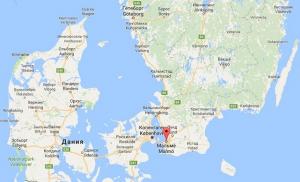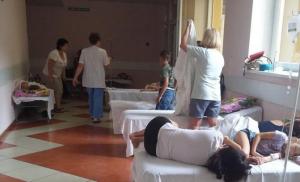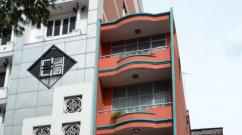Individual tax reporting submission. Taxation of income from renting out non-residential premises to individual entrepreneurs How much will it cost to rent to individual entrepreneurs
Moscow, October 23, 2018. - One of the legal ways to rent out an apartment is to purchase a patent after an individual receives the status of an individual entrepreneur (IP): the tax rate in this case is 6% versus 13% when paying personal income tax. However, the patent tax system (PTS) has not received wide recognition: according to the Apartment Rental Department INCOM-Real Estate, it is currently used by only 10% of the capital's landlords who pay taxes as part of rental housing, the rest file tax returns. Among the reasons for the low popularity of the patent, experts highlight, in particular, several circumstances: firstly, the lack of connection between the cost of this permit and the actual rental yield; secondly, the final expenses of PSN participants (including mandatory payments to individual entrepreneurs) are higher than the income tax for individuals; In addition, the status of an individual entrepreneur significantly limits the rights of the landlord in the event of the sale of a rented apartment. Leading legal consultant of the INCOM-Real Estate Legal Service Kirill Kokorin comments on the characteristics of a patent as a type of tax regime and presents his opinion on the profitability of this system for the landlord.
Purchasing a patent: limitation and price
Kirill Kokorin, leading legal consultant of the INCOM-Real Estate Legal Service: “The acquisition of a patent is only legal for individual entrepreneurs, that is, individuals without individual entrepreneur status cannot use this taxation system. The cost of a patent in the Moscow region is based on the amount of potential annual income from renting out an apartment, which is determined by the Moscow government. As of 2018, the tax rate is 6% of such income. The price of a rental activity permit depends on the location (county and region) where the rental apartment is located and its size.
I will give examples. Patent for an apartment up to 50 square meters. m, located in the South-Western Administrative District, costs 18,000 rubles (the potential annual income from leasing such an object, established by the Moscow government, is 300,000 rubles per year; calculation: 300,000 X 6% = 18,000 rubles). The cost of a patent for an apartment of 75 square meters. m, located in the Central Administrative District - 54,000 rubles (potentially possible annual income from leasing such an object, established by the Moscow government, is 900,000 rubles per year; calculation: 900,000 X 6% = 54,000 rubles). The amount of actual income, which may be much lower, is not taken into account when calculating the cost of a patent.
The patent system is unpopular - according to INCOM-Real Estate statistics, no more than 10% of those who rent out an apartment in Moscow and pay taxes on this income adhere to this tax regime.”
Reasons for the unpopularity of PSN
Kirill Kokorin: “The presence of a patent is not related to the size and regularity of income from renting out an apartment: the landlord buys this permit for a certain period (from 1 to 12 months within a calendar year), and even if the object has been idle all this time - for example , it was not possible to pass it, the patent is not renewed and its cost is not refunded.
In addition, regardless of whether income is received from renting out an apartment or not, the individual entrepreneur makes annual mandatory payments to the Pension Fund - in 2018 this is 5,840 rubles, as well as to the Federal Medical Insurance Fund - in 2018 this is 26,545 rubles . The total amount of mandatory payments is 32,385 rubles. For an individual entrepreneur who has purchased a patent, the possibility of reducing the amount of tax on the amount of insurance premiums is not provided.
The expenses of landlords who are individual entrepreneurs include the cost of a patent and mandatory payments. Individuals pay only personal income tax. Let's look at an example. Apartment in the South-Western Administrative District with an area of 45 sq. m is rented for 30,000 rubles per month, the annual rental income is 360,000 rubles. The cost of renting out this apartment for an individual (personal income tax) with such income will be 46,800 rubles per year (360,000 X 13%); for individual entrepreneurs – 50,385 rubles (18,000 rubles for a patent + 32,385 rubles as mandatory payments).
To determine the feasibility of purchasing a patent, each landlord should carry out a competent calculation of all possible options.”
Apartment seller with individual entrepreneur status: features of the situation
Kirill Kokorin: “The owner of a living space who has used it at least once for business purposes, having the status of an individual entrepreneur, will not be able to sell this apartment as an individual, only as an individual entrepreneur. This means that the seller is deprived of all benefits and deductions that are due to an individual. If the owner officially liquidates the individual entrepreneur, the situation during the sale will only become more complicated. The seller of an apartment that was previously used for business purposes who has lost the status of an individual entrepreneur is obliged to pay personal income tax on the entire amount received from the sale. The period of ownership of the apartment does not matter. This is the stable position of the Ministry of Finance.
Today, rent is one of the most profitable areas of business. There is no need to recruit a huge staff of qualified employees, there is no need to deal with production and purchasing, and there are minimal risks with an excellent level of income.
Individual entrepreneur rents out non-residential premises what taxes does he have to pay? Despite the fact that this type of activity can be carried out not only by individual entrepreneurs, but also by legal entities and individuals, the tax rate varies quite significantly. Which taxation option is more profitable for a “rental” business, and what troubles may lie in wait for individual entrepreneurs?
Lease agreement
A lease agreement for non-residential premises is an agreement concluded between the parties (tenant and lessor) planning to conduct business (trade, storage, etc.)
Real estate is used to receive revenue from a second party for the temporary use of a residential or non-residential property.
If the premises are planned to be rented to an individual, in order to carry out such an operation it is necessary to register as an individual entrepreneur.
In addition, at the initial stage of registration, a businessman must indicate rent in the types of activities.
Under the general taxation system, when renting out real estate, an individual entrepreneur is required to pay a tax of 13%, maintain a KUDiR (book of income and expenses), and also provide reporting in Form 3 of personal income tax within the established time frame.
Regarding entrepreneurs working on the simplified tax system, then:
- Individual entrepreneur on the “income” object with a rate of 6%.
- Entrepreneurs on “income reduced by expenses” apply their standard rate of 15%.
Businessmen on a patent take into account a flat tax of 6%.
It is worth paying attention to the fact that the landlord pays for utilities for his premises himself; accordingly, using the simplified tax system “income minus expenses”, he can include them in his expenses when calculating the tax. The simplified “income” system does not allow this to be done. 
The patent system operates on estimated income; accordingly, an individual entrepreneur using PSN also cannot reduce the tax base for utility costs for non-residential property that he rents out. Moreover, the tax is paid automatically at the stage of purchasing a patent for a year.
If an entrepreneur rents out an apartment using the simplified tax system “income minus expenses” except utilities he can include repair costs as an expense item, thereby reducing the tax base.
Let's consider an example of calculating tax when renting out residential premises owned by an individual entrepreneur working on the simplified tax system “income”.
The lease agreement specifies the monthly payment amount in the amount of 20,000 rubles. per month. The annual income from the apartment will be 240,000 rubles.
The entrepreneur undertakes to pay 6% on “income” for the reporting year, that is, 240,000 x 6% = 14,400 rubles.
Moreover, it is worth noting that in addition to this tax, the individual entrepreneur is obliged to make payments to the Pension Fund and the social insurance fund. Therefore, the question of whether it is more profitable to rent out an apartment to an individual (13%) or to an individual entrepreneur is very controversial. 
An entrepreneur who rents non-residential premises for his business can reduce the tax base using the simplified tax system “income minus expenses.”
Rights and obligations of the parties
The parties to a transaction for leasing non-residential premises can be an individual entrepreneur or a legal entity. The agreement is recognized as valid only when executed in writing.
The main nuances when concluding a transaction between an individual entrepreneur and an LLC:
- If the contract is endorsed by the general director on the part of a legal entity, he must confirm his authority to do so in a documentary manner.
- An individual entrepreneur, whose actions are based on a certificate of state registration, can confirm his authority with his passport and a certificate of registration represented by an individual entrepreneur (USRIP).
- Without a trust document, the manager authorized to act on behalf of the LLC has the right to sign a lease agreement (extract from the Unified State Register of Legal Entities).
A businessman can endorse the agreement with a personal signature, since the legislation of the Russian Federation allows entrepreneurs to conduct business without a seal. 
An entrepreneur can rent out premises to individuals. face. The legislation does not regulate the rules regarding rental restrictions. Consequently, any legally capable person can participate in a transaction for the lease of non-residential premises.
Renting out a personal car by an individual entrepreneur is not prohibited by law. The transaction is formalized by signing an agreement between the entrepreneur and an individual or LLC. The clauses of the contract clearly state all the nuances that may arise during the operation of the car. A party is appointed to bear the costs associated with the purchase of fuels and lubricants, spare parts and monetary compensation for wear and tear.
An individual entrepreneur who has the right of ownership of a vehicle intended for the provision of motor transport services can apply the UTII taxation system. This rule is regulated by Tax Code Article 346.26.
Differences in taxation of rental income
 Some believe that it is more profitable to rent out real estate through an entrepreneur who works at a tax rate of 6%, as opposed to an individual who will have to pay 13% of the income from the transaction. In fact, the entrepreneur pays additional contributions to the budget.
Some believe that it is more profitable to rent out real estate through an entrepreneur who works at a tax rate of 6%, as opposed to an individual who will have to pay 13% of the income from the transaction. In fact, the entrepreneur pays additional contributions to the budget.
An individual entrepreneur is required to pay taxes on rental activities:
- 6% from rental income;
- contributions for oneself to the pension fund;
- deductions for wages of employees (income, Pension Fund and social insurance fund).
In addition, the entrepreneur has a lot of paperwork related to accounting. If an individual entrepreneur rents premises, this directly affects his profit. Costs are non-operating and have an indirect impact on operating results. 
Renting out an apartment and non-residential premises involves receiving money for the use of the property. But, non-residential premises are most often subject to VAT, unlike residential ones. This is due to the fact that non-residential premises are often rented out for commercial activities. And mainly such areas are of interest to large organizations registered as a legal entity and interested in receiving VAT. Entrepreneurs working for OSNO can provide a tax deduction, who as a result of such a transaction receive not only a profit, but also a tax liability in the amount of 18% of the amount specified in the lease agreement.
Of course, there are cases when LLCs agree to rent without value added tax, but only small areas.
The advantage of renting residential real estate to friends or relatives by an individual is the absence of an obligation to pay cash to the budget. But, in this case, non-residential premises must be rented out without payment, otherwise the transaction will be equated to a commercial transaction subject to calculation and payment of tax.
Both an entrepreneur and an individual have both pros and cons from rental services.
Responsibility for non-payment of tax
 The absence of a lease agreement for an individual entrepreneur is not a direct violation, but the absence of an agreement to transfer non-residential premises for temporary use (lease) may attract the attention of a Federal Tax Service inspector.
The absence of a lease agreement for an individual entrepreneur is not a direct violation, but the absence of an agreement to transfer non-residential premises for temporary use (lease) may attract the attention of a Federal Tax Service inspector.
The Tax Service regards such an action as a deliberate reduction in the tax base, which is a valid reason for imposing a fine on a businessman.
Failure to register an agreement with Rosreestr poses serious tax risks.
Let us remind you that if an agreement on the temporary transfer of property for use is drawn up between an individual entrepreneur and an LLC, it is subject to mandatory registration. In all other cases, including rental of residential premises, an agreement whose term exceeds 11 months is also subject to mandatory completion of the appropriate procedure.
An individual entrepreneur is an individual, so simultaneous tax and criminal liability is impossible.
According to the Tax Code (Article 76), due to late submission of reports and late payment of taxes, Federal Tax Service employees have the right to block current accounts in an individual entrepreneur’s bank. 
Restrictions on non-cash transactions can be removed by submitting reports and paying taxes, respectively, through the bank’s cash desk on behalf of the entrepreneur, while the account is temporarily “frozen.”
If the rules for keeping records of expenses and costs are not followed, a businessman may be fined:
- 10,000 rubles (the violation was recorded in one reporting period);
- 30,000 rubles (incorrect calculations were made over more than one tax period);
- 20% of the unpaid tax amount and at least 40,000 rubles in case of deliberate underestimation of the tax base for calculation.
Criminal liability is applied to individual entrepreneurs if it is discovered that falsification of documents and the provision of false information to the tax authority.
If the debt is very large or the actual revenue is concealed, the entrepreneur will have to pay a fine of up to 500,000 rubles or may be imprisoned for up to 3 years.
For individual entrepreneurs, the simplified taxation system is the most profitable for leasing residential and non-residential premises.
As an individual entrepreneur, in addition to insurance premiums, it is enough to pay only 6% per year of the amount of revenue without worrying. Also, entrepreneurs using the simplified tax system are exempt from paying property tax.
But even here there are some peculiarities. If a businessman’s income exceeds 1.5 million, registration as a legal entity will be required. Violation is prosecuted according to the criminal code.
In case of non-payment of tax, at the level of revenue allowed by law for individual entrepreneurs, the administrative penalty will range from 500 to 2000 rubles.
However, the patent tax system (PTS) has not received wide recognition: according to the Apartment Rental Department INCOM-Real Estate, it is currently used by only 10% of the capital's landlords who pay taxes as part of rental housing, the rest file tax returns. Among the reasons for the low popularity of the patent, experts highlight, in particular, several circumstances: firstly, the lack of connection between the cost of this permit and the actual rental yield; secondly, the final expenses of PSN participants (including mandatory payments to individual entrepreneurs) are higher than the income tax for individuals; In addition, the status of an individual entrepreneur significantly limits the rights of the landlord in the event of the sale of a rented apartment. Leading legal consultant of the INCOM-Real Estate Legal Service Kirill Kokorin comments on the characteristics of a patent as a type of tax regime and presents his opinion on the profitability of this system for the landlord.
Purchasing a patent: limitation and price
Kirill Kokorin, leading legal consultant of the INCOM-Real Estate Legal Service: “The acquisition of a patent is only legal for individual entrepreneurs, that is, individuals without individual entrepreneur status cannot use this taxation system. The cost of a patent in the Moscow region is based on the amount of potential annual income from renting out an apartment, which is determined by the Moscow government. As of 2018, the tax rate is 6% of such income. The price of a rental activity permit depends on the location (county and region) where the rental apartment is located and its size.
I will give examples. Patent for an apartment up to 50 square meters. m, located in the South-Western Administrative District, costs 18,000 rubles (the potential annual income from leasing such an object, established by the Moscow government, is 300,000 rubles per year; calculation: 300,000 X 6% = 18,000 rubles). The cost of a patent for an apartment of 75 square meters. m, located in the Central Administrative District, - 54,000 rubles (potentially possible annual income from leasing such an object, established by the Moscow government, is 900,000 rubles per year; calculation: 900,000 X 6% = 54,000 rubles). The amount of actual income, which may be much lower, is not taken into account when calculating the cost of a patent.
The patent system is unpopular - according to INCOM-Real Estate statistics, no more than 10% of those who rent out an apartment in Moscow and pay taxes on this income adhere to this tax regime.”
For landlords, the most suitable tax regime is often the simplified tax system “income”, but it is better to check the conclusions for each specific case by calculations. An example of calculations and 4 situations when it is better to choose a different mode.
For organizations and entrepreneurs, taxation of rental real estate is possible in several options. Each has its own advantages and disadvantages. Let's look at what budget contributions await the property owner and how to choose the optimal tax regime.
Special tax regimes for the lessor
Special modes (STS, UTII, PSN) are distinguished by ease of accounting and reporting, reduce the amount of taxes paid and, for a profitable business, reduce the workload.
All payers under special regimes are exempt from VAT, personal income tax of the entrepreneur, income tax and partially property tax - instead of them, one tax is established.
Features of property tax for special regimes:
- paid for office, retail real estate, catering and consumer services facilities, administrative centers, if the corresponding law has been adopted in the region and the cadastral value of the areas has been determined;
- rate up to 2% - accepted by local legislation.
Special modes have their own application characteristics.
Two types of "simplified"
If the lessor meets the established criteria, choosing the simplified tax system is often optimal.
A simplified system is available if annual income does not exceed 150 million rubles. (limit from 01/01/2017), the cost of fixed assets does not exceed 150 million rubles. and the number of employees is no more than 100.
"Simplified" can be used in two versions - at the choice of the taxpayer.
- rate 15%;
- the basis for calculation is revenue reduced by costs;
- minimum deductions - 1% of receipts.
- rate 6%;
- base - revenue, i.e. all receipts;
- There are deductions - insurance premiums are subtracted from the calculated payment.
In the regions, benefits may be introduced, but this is rare for rental businesses.
Paying 15% of profit is more profitable than 6% of income only if the cost-to-revenue ratio is greater than 0.6 - this is extremely rare for rentals.
However, if a legal entity rents out illiquid space for a nominal fee, so that downtime does not bring losses, it is profitable to use the simplified tax system of 15%. The rate is lower than the income tax, there is no VAT, and the amount of deductions can be reduced to a minimum of 1%.

Entrepreneurs in the first type do not actually apply the “simplified tax”, since when renting non-residential premises to individual entrepreneurs, taxation in the form of the simplified tax system of 6% will reduce the calculated tax on “personal” contributions to the Pension Fund and the Social Insurance Fund. For small rental income, this can reduce the payment to zero, in other cases it can reduce the tax burden.
Patent system for individual entrepreneurs
The regime is available only to entrepreneurs who own real estate and earn no more than 60 million rubles from it. per year.
- enforced by regional law (not available in all cities);
- rate from 7.5 to 15%;
- the basis for calculation is the level of income approved by law (“imputed”);
- Deductions for contributions and benefits apply.
Organizations and individual entrepreneurs with employees can reduce the payment (up to 50%) by the amount of paid contributions and benefits. Individual entrepreneurs without employees have the right to reduce UTII by the entire amount of “personal” insurance premiums. Tax accounting and reporting - to a minimum extent.
It is profitable to use a special regime if you have high and stable income from tenants: if there is no income for some period, you will still have to pay the “imputation”.
General system: what taxes to pay and when application is justified
This is the most complex mode in terms of accounting and reporting. Traditional (general) taxation involves the payment of three main taxes:
- on the profits of organizations and personal income tax for entrepreneurs:
rates are 20% for legal entities and 13% for individual entrepreneurs;
accrued from profit, i.e., allows you to take into account costs;
if expenses equal or exceed revenues, the payable will be zero.
- for property:
calculated based on the value of the property;
the rate is up to 2.2% if the calculation is made according to the residual value, and up to 2% if according to the cadastral value; The specific size depends on the region.
- for added value:
rate 18%;
in fact, 18/118 of the rent will be paid without utilities and other similar payments;
with quarterly revenue less than 2 million rubles. you can get a VAT exemption.
The main disadvantage of OSNO for rental business is the high tax burden. The share of costs when renting out non-residential premises is low. Therefore, the ability to track expenses - an advantage of OSNO - does not have any special advantages.
In what cases can you not do without a traditional system?
- The taxpayer cannot apply the simplified one because it does not meet its criteria. For example, real estate costs more than 150 million rubles, or income has exceeded the established limit (see below for criteria).
- Renting premises is a non-core business and brings in insignificant profits. For example, a small part of the cafe area is rented out, and the tax system for the cafe is OSNO. In this case, it is also advisable to leave the lease on the common system.
Choosing the most profitable option - examples of calculations
The choice of taxation system depends on many factors. For each specific case, it is better to carry out preliminary calculations.
Example 1
Alta LLC rents out retail space(100 sq. m), utility bills are included in rent.
- 219,66 - 13,18 = 206,48
- (1,220.34 - 650.40) × 20% = 113.99
- (1,440.00 - 663.58) × 15% = 116.46
- 1,440.00 × 6% - 27.18 = 59.22
- basic yield for an area of more than 5 square meters. m is 1.2 thousand rubles per month / sq. m. m
- (1,440.00 × 0.9 × 1.798 × 15%) - 27.18 = 322.35 (the deflator coefficient is 1.798 for 2017; the adjustment factor is assumed to be 0.9)

Example 2
The conditions are similar to the previous ones, but the lessor is an individual entrepreneur. Insurance premiums in the amount of 39.39 thousand rubles will be added to mandatory deductions.
- (1,220.34 - 650.40 - 39.39) × 13% = 68.97
- (1,440.00 - 663.58 - 39.39) × 15% = 110.54
- 1,440.00 × 6% × 50% = 43.20 (can be reduced by no more than half)
- (1,440.00 × 0.9 × 1.798 × 15%) - 27.18 - 39.39 = 282.96
- 1,000.00 × 6% = 60.00 (based on the basic yield established in Moscow, Vnukovo)
For the examples considered, the choice is obvious: a simplified tax system with a rate of 6% allows you to minimize the tax burden.
However, the conclusions are valid for specific situations; in some cases it is worth focusing on other options:
- BASIC: allows you to submit a VAT refund if the object has just been purchased and the seller is a VAT payer. In addition, on a general system, with high current costs, the tax may be zero.
- Simplified tax system “income - expenses”: it is profitable if it is better to do without VAT, but the share of costs is high (exceeds 60% of revenues).
- UTII: you can save for areas larger than 5 square meters. m, if the rent is above 5,400 rubles. / sq. m.
- PSN: profitability depends on the region. Thus, for the city of Novosibirsk, according to the conditions discussed above, the cost of a patent will be 24 thousand rubles, and a patent will turn out to be the most profitable solution.













